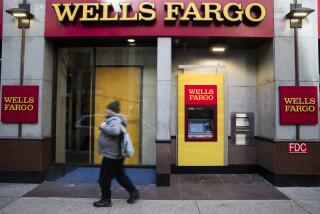Managing Money : Wait for Increases in Dividends Paying Off
- Share via
Fulfilling long-standing investor hopes, America’s corporate giants are finally beginning to post hefty dividend increases. That’s good news for conservative investors who already own their stocks. But it isn’t necessarily going to prop up the market.
Standard & Poor’s reported this week that 106 companies raised dividends in June, 19% more than in the same month a year ago. This year to date, 893 companies have upped dividends, a 3.5% rise from a year ago. Meanwhile, 154 firms have declared extra dividend payments, a nice gain of 18.5%.
More significant is the size of the dividend boosts. S&P; predicts that there will be a 10% rise this year above 1987 levels for companies whose stocks are included in the S&P; 500 index of blue chip issues. That would be the biggest jump since an 11.4% gain in 1979. Dividends rose 6.4% last year and 4.8% the year before.
Such double-digit dividend gains have been eagerly awaited by investors as their reward for strong corporate earnings increases that started last year. After declining in 1985 and staying flat in 1986, profits at firms in the S&P; 500 jumped 20% last year. S&P; expects them to rise a whopping 37% this year, partly because more companies--particularly those in steel and other heavy industries--begin to enjoy strong profit gains.
Such delays between profit increases and dividend increases are normal, because company directors want to be sure that initial earnings gains will be sustained. Companies hate to slash dividends once they raise them, so they want to feel confident that any raises will stick.
“One or two good quarters in a cyclical business are not sufficient to give the board confidence to jack up dividends,” said Martin Skala, senior editor at the S&P; Outlook newsletter in New York.
Another reason for the delay: Many corporations have been using cash from higher profits to buy back their own stock--in effect, paying another form of dividend to shareholders, because buybacks boost stock prices. Further, some companies have been using profits to pay for spending on new plants and equipment, anticipating further economic expansion.
Strong dividend gains have also been eagerly awaited because of changes in the 1986 tax reform act. The act increased capital gains taxes to the point where those gains are now taxable at the same rate as dividends.
That makes dividends relatively more attractive to investors, because stocks paying high dividends, such as utilities, tend to be far less volatile than low-dividend stocks that have greater potential for capital gains. Dividend payments, in effect, act as a buffer in case stock prices head south. Accordingly, some view high-dividend stocks as good hedges against inflation and recession.
Evidence of the stability of high-dividend stocks can be seen in the performance of mutual funds that invest in such issues. Since late last August, when the Dow Jones industrial index peaked at over 2,700 two months before crashing, mutual funds investing in utility stocks are down only an average of 1.09%. Equity income funds, which invest in a range of high-dividend stocks, are off 8.17%. By contrast, all stock funds are down an average of 12.48%.
The trade-off for this stability, however, is that high-dividend stocks and funds haven’t gained as well in strongly rising markets. And because bull markets occur two-thirds of the time, low-dividend stocks thus may provide a better return in the long run.
Nonetheless, high-dividend stocks or funds could be a good investment for conservative investors. But buy them now only as a long-term investment, says Arnold Kaufman, editor of S&P; Outlook. With stocks near post-crash highs, there is a lot of short-term risk in the market, he says.
High dividends “are certainly a supportive influence on stock prices,” Kaufman said. “But by themselves, dividend increases are not likely to keep stocks from falling if a bear market resumes as we expect it to.”
He added, “Although dividend increases are welcome, they should not alter your basic investment strategy, which should be cautious at this time.”
Kaufman noted that on a historical basis, stocks are still somewhat overvalued as measured by their dividend yields--dividend as a percentage of stock price. Despite recent dividend gains, the average yield on the stocks in the S&P; 500 is about 3.6%, close to the 3% level that historically signals a market top, as it did last summer and fall.
Also, picking stocks for their dividends can be tricky. A stock with a high dividend yield may not necessarily be a good buy. The yield may be high not because the dividend is big, but because the stock price has tumbled due to poor earnings or fears that the dividend may be cut.
Geraldine Weiss, editor and publisher of Investment Quality Trends, a La Jolla newsletter that focuses on stock dividends, won’t even consider recommending companies unless they’ve raised dividends at least five times in the last twelve years. They also must have posted at least 25 years of uninterrupted dividends and shown earnings improvements in at least seven of the last 12 years.
Even after stocks pass those tests, she still won’t recommend them unless their dividend yields have reached levels that historically showed those stocks to be undervalued. In her latest newsletter, she is bullish on pharmaceutical stocks, contending that several--including Bristol-Myers, Pfizer and Syntex--are historically undervalued and have high potential with very little risk. But, of course, she offers no guarantees.
An alternative to picking individual stocks, particularly for small investors, is to invest in mutual funds that pick stocks with reasonable dividends as well as potential for price appreciation. So-called equity income funds and growth and income funds seek such objectives.
Top-performing, or often recommended, no-load funds in those categories include: Vanguard High Yield Stock (up 21.06% year to date through June 29, down 3.03% since the August market peak); Royce Total Return (up 22.99% year to date, up 3.32% since peak); T. Rowe Price Equity Income (up 18.89% year to date, down 0.56% since peak); Evergreen Total Return (up 13.45% year to date, down 6.32% since peak), and Mutual Shares (up 22.54% year to date, up 3.55% since peak).
More to Read
Inside the business of entertainment
The Wide Shot brings you news, analysis and insights on everything from streaming wars to production — and what it all means for the future.
You may occasionally receive promotional content from the Los Angeles Times.










